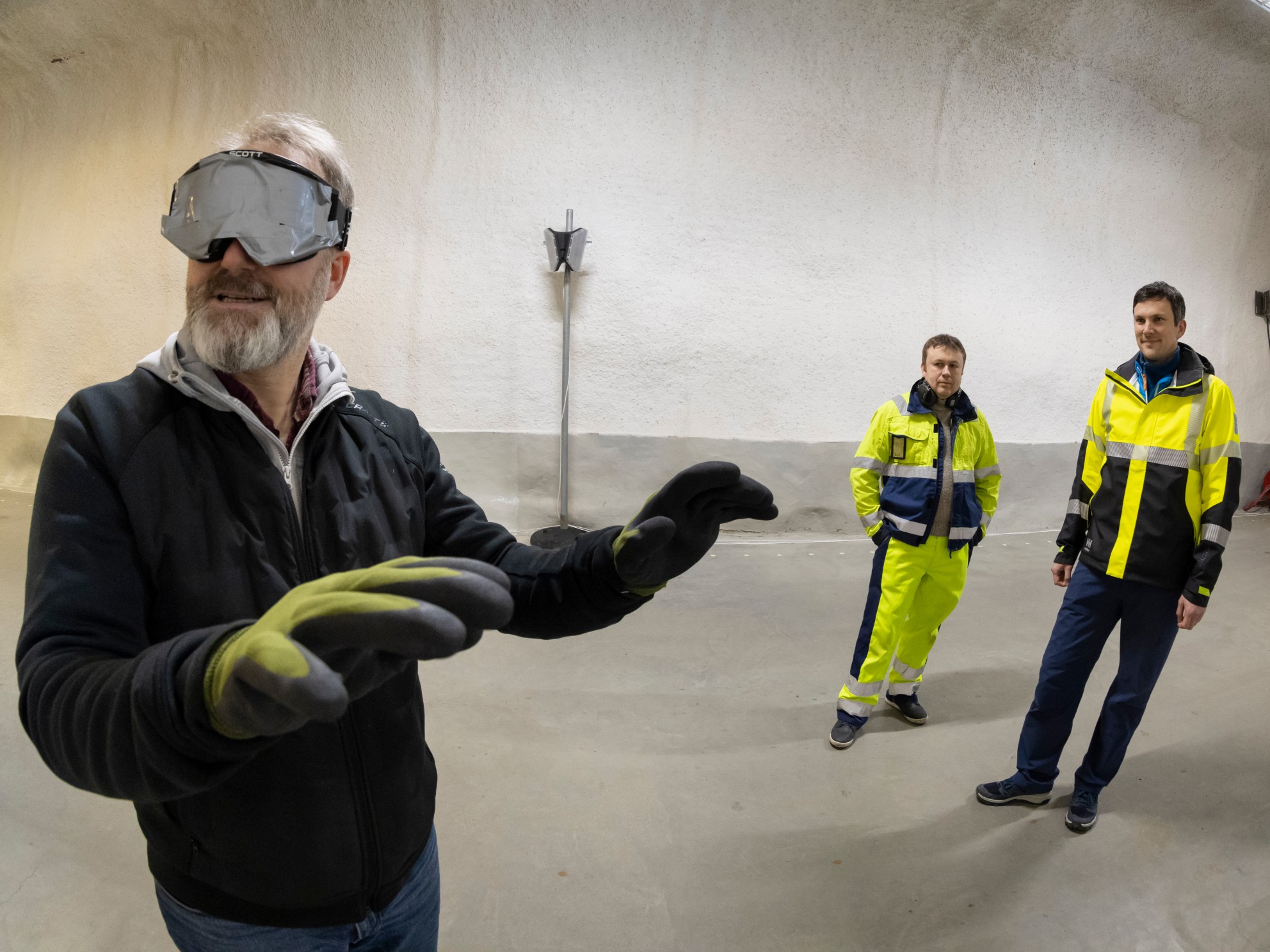Such a scenario is what inventors Eugene Zaikonnikov and Tron Vedul Tronstad have envisioned. They have created a new sound system for evacuating people in a tunnel or along another walkway.
The patent is owned by the company Norphonic from Bergen, where Zaikonnikov is employed.
The system, which has been named Evacsound, consists of several loudspeakers placed at regular intervals along the tunnel. A particular sound is played repeatedly with a slight delay between the speakers. The speakers are directional, which means that you hear the sound much louder from one side of them than the other. This should make it easier for people to understand which direction they should go.
The direction that should be heard well can be reversed, which means that the system can guide people in both directions, and even towards each other if you want them to go to a shelter in the middle of the tunnel.
- A challenge with fires in tunnels is that vision is quickly restricted by smoke. The only way to escape from the situation is either to follow the walls or other signals that are available. There was no system that used sound to evacuate people, says inventor Eugene Zaikonnikov.
According to the Norwegian Road Administration, evacuation from road tunnels is based on the principle of self-rescue. Tunnels can be located far away from buildings and the nearest fire and rescue services. As a road user, you must take responsibility for getting out.
The key lies in the ears and the brain
The vast majority of people have two ears, one on each side of the head. This enables us to identify where a sound is coming from. In addition, most of us are able to hear differences in volume and frequencies, and to interpret this.
- Human hearing is an extremely good sense, and we have an innate ability to hear where a sound is coming from. Distance to sound is probably also something that evolution has given us the ability to interpret, since it was crucial to discern whether a danger came closer or disappeared, says SINTEF researcher Tron Vedul Tronstad.
Zaikonnikov and Tronstad took these characteristics as a starting point when they were to create the system.
- When Norphonic came to us with a product that made it possible to have several loudspeakers along the tunnel, we came up with the idea of utilizing this innate ability, says Tronstad.
Must be understandable
In the National Road Administration's test tunnel at Åndalsnes, several test subjects were fitted with dark glasses to simulate poor visibility. The sound system was then switched on, and several sounds were played. Clicking sounds, whistling and a kind of bell, similar to the one that can be heard at train crossings, were tried.
- We chose to go ahead with the bell. This sound stands out very much from other sounds in the tunnel and is easy to hear the direction of. The sound of the bell was also perceived as the easiest to follow to the escape route, says Tronstad.
– The fact that we ended up with a bell may seem a little strange, but it doesn't really matter what sound it is, as long as it is audible.
Tron Vedul Tronstad
The sound must also be audible and understandable in a stressful situation where there are also other sounds.
- In a normal tunnel there can be up to 4 seconds of reverberation, so we have to have the speakers quite close to each other and close to the ground. We must have speakers on both sides and have a certain proportion of directional speakers so that you can perceive which direction the sound is coming from, says Zaikonnikov.
In addition, the speaker units have adaptive volume adjustment, which means that the surrounding sound determines how loud the chime is played. This makes it possible to play much lower when it is quiet in the tunnel, which can reduce panic and even the risk of hearing damage, says Tronstad.
Patent granted
The inventors have now been granted a patent for this system, and it has been applied for in the USA and the EU. The Bergen-based company Norphonic started up in 2008, and is the holder of the patent. They mainly deal with telephony, and have, among other things, supplied many of the emergency telephones in Norwegian and foreign tunnels and wind turbines.
The company thus knows the topic of tunnel fires and evacuation well. After several serious tunnel fires in the period 2011-2013, and as experts in sound, they wanted to use their sound expertise to create a system based on sound that could enable people to get out on their own.
– There is a lot of development, money and time in the technology behind it. During the development phase, it became clear to us that this is a product that works and that there is a need for it. That's why it was important to get a patent.
Eugene Zaikonnikov
Support from the Norwegian Public Roads Administration and Innovation Norway
Much of the testing and development has been carried out together with the Norwegian Road Administration.
- Long road tunnels over 3,000 meters do not have good enough safety devices that can help road users get out of the tunnels, says chief engineer at the Norwegian Road Administration, Ole Pedro Myklebostad.
When the inventors had been working on the project for about two years, it turned out that the Norwegian Road Administration, in collaboration with Innovation Norway, should announce a competition for potential systems that could help with evacuation in tunnels.
Norphonic and the inventors won the competition, and in autumn 2019 they were able to continue the project with both financial and practical support. At the end of 2020, they had a finished product, and the first delivery took place in 2021.
- We had done our homework before, but it helped a lot to get funding and practical help from the Norwegian Road Administration, says Zaikonnikov.
– This invention contributes to making our roads safer, and is the result of good cooperation between several Norwegian environments - research, funding and government support. This is exactly the type of socially beneficial innovation we are rooting for. Norphonic has major international competitors, therefore they made a good strategic choice by securing a patent so quickly. This is a company that delivers products on an international scale, and that is something we need more of in Norway. It is especially important to ensure that you have IP rights if you have export plans.
Bjørn Lillekjendlie
The way forward
The Norwegian Public Roads Administration has already acquired several Evacsound systems both in existing tunnels and in new tunnels under construction. In the contract that was entered into in connection with the test project, there is an option for the Norwegian Public Roads Administration to purchase up to 20 Evacsound systems, says chief engineer Ole Pedro Myklebostad.
Tunnels are the focus initially, but in the long term Zaikonnikov believes that the system can also be used in larger buildings such as office buildings, schools or hospitals. These are places where there may be a need to get many people out through narrow corridors.







